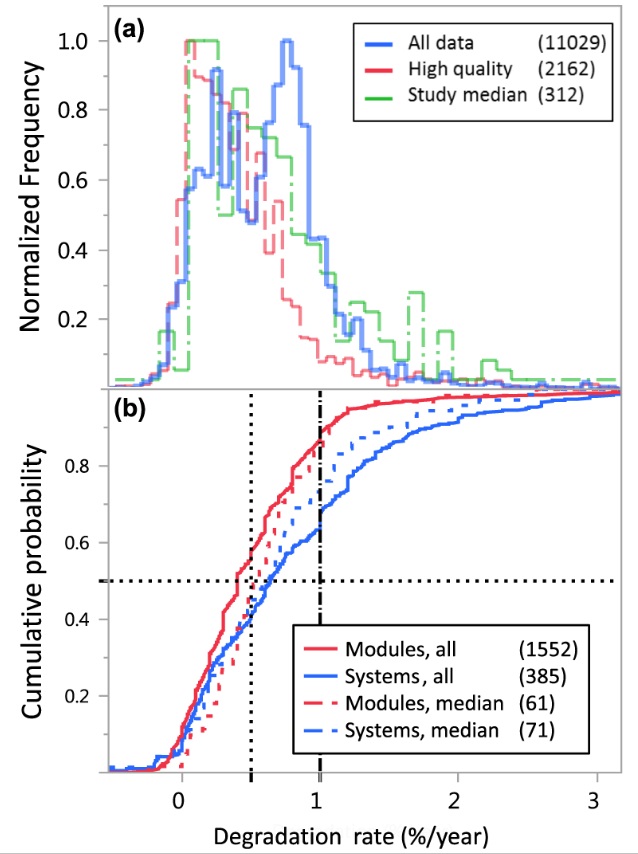STAT FAQs Part 2: Lifetime of PV Panels
April 23, 2018 by Benjamin Mow
The Solar Technical Assistance Team (STAT) receives many interesting and broadly applicable questions from state and local governments. The STAT FAQs blog series will highlight pertinent information as it relates to questions STAT receives. The focus of Part 2 in the series is the productive lifetime and degradation rate of solar PV panels.
Question: What is the productive life of solar PV panels, and do they produce the same amount of electricity year-over-year?
Answer: The productive life of solar panels and the electricity production from these panels over time depend on factors such as climate, module type, and racking system, among others. The reduction in solar panel output over time is called degradation. NREL research has shown that solar panels have a median degradation rate of about 0.5% per year but the rate could be higher in hotter climates and for rooftop systems.[1] A degradation rate of 0.5% implies that production from a solar panel will decrease at a rate of 0.5% per year. This means that in year 20, the module is producing approximately 90% of the electricity it produced in year 1.
Figure 1. The normalized frequency (a) and cumulative probability (b) of PV degradation rates

As far as the productive life of a solar panel, there are no end-dates per se. However, modules are typically warrantied for 20–25 years, after which they can still produce electricity, but the level of actual output is no longer guaranteed. One solar project owner may decide to repower or decommission a project after 25 years, while another may leave it in place and let it continue to generate electricity, albeit at a lower level.
For information about solar technical assistance, or to ask a solar-related question, visit the STAT website or email us at stat@nrel.gov.
[1] Higher temperatures are likely the reason for increased degradation rates in warmer climates and rooftop systems. Rooftop systems often have higher ambient temperatures than ground mounted systems due to lack of air flow under the panels. High temperatures can negatively affect electronic performance, consequently degrading PV performance.
Share

